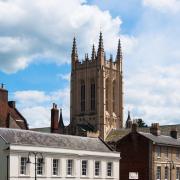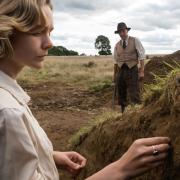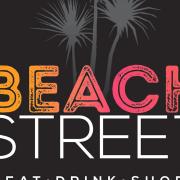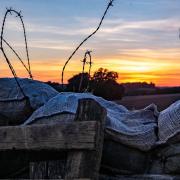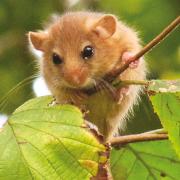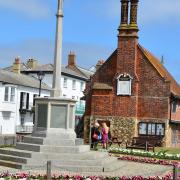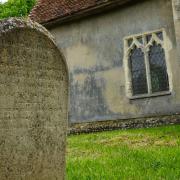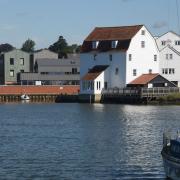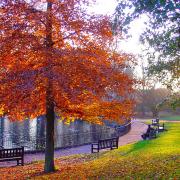They call it bow and arrow country – and Sam Rosebery finds that this remote corner of high Suffolk still speaks of its ancient past
They call it bow and arrow country – and Sam Rosebery finds that this remote corner of high Suffolk still speaks of its ancient past
There’s something very special, almost mysterious about this lonely landscape of scattered farmsteads, hamlets and villages under an immense East Anglian sky.It is intensely agricultural and intensely rural, yet peppered with intimate village greens and extensive commons. There are ruined priories and ancient churches, in which good folk have worshipped for more than 1,000 years.It is home to an enigmatic minster, the remains of a bishop’s palace, a medieval castle and, of course, the occasional local tree stump – of the sort that drive clapped-out Corsas.Trumpeting like a herd of angry elephants, the Gary-boy exhaust can be heard approaching over All Saints’ Common long before the vehicle pulls into sight.As it rounds the bend by Homestead Cottages there’s an extra blast of foot-flat-to-the-floor power as it hurtles towards the hump-back bridge.Momentarily airborne, the wheels appear to fold beneath the undercarriage, before the old crate hits the tarmac with a sickening clunk and slews alarmingly across the road.Fortunately, the young stump at the wheel regains control and, with fiendish glee, he and his similarly foreshortened passenger roar off into the distance.“Local lads,” shrugs a woman walking her dog who, like me, is frozen to the spot.Yet otherwise this ancient corner of high Suffolk exudes a peace and calm that is becoming increasingly rare elsewhere in the county. Here 4x4s are actually splattered with mud – heavens forbid! – and their drivers don’t hog the single-track lanes, but pull over with a smile and wave to let you pass. So startled the first time this happens, I nearly put the family Focus into a ditch – but soon realise such courtesy is the norm here.The Saints is a collection of small villages and hamlets mostly named after assorted saints and bounded by the market towns of Bungay, Beccles, Halesworth and Harleston. To the west are the South Elmham villages – St James, St Nicholas, St Cross, St Mary, St Peters, St Margaret, St Michael and the catch-all of All Saints. To the east are the Ilketshall villages – St Margaret, St John, St Andrew and St Lawrence.While the churches, the towers of which can be seen from far and wide, are the key to The Saints, there is much else on offer, not least the area’s freshness and vitality.It is splendid walking country, with a network of public footpaths, and good for cycling, too, with few demanding hills. There’s the occasional eatery and even a small but famous brewery.The village of Rumburgh, with its country inn, may not necessarily be noted for its saintly inhabitants. However, nearby is St Michael’s Church, just south of that hump-backed bridge, which was once the Benedictine Priory of St Michael & St Felix, its moated churchyard and strangely broad and truncated tower being clues to its historic origins.Although mentioned in the 1086 Domesday Book, little is known of the priory until about 1528 when it was suppressed, its money and lands falling into the greedy clutches of that Ipswich fat-boy, Cardinal Thomas Wolsey, who blew it all on the hobby college he created in the town. vv Over the bridge is All Saints South Elmham, the few houses set about a wide and windswept common, while the little round-towered church, now in the care of the Churches Conservation Trust, is some distance away, down a long track and surrounded by open fields.At the head of the track stands the impressive redbrick pile of the old rectory – and it’s ironic that, as with so many rural parishes, the homes built for the clergy were so much bigger and grander than the modest houses of God they were intended to serve.Who was more important, one wonders?
“The countryside here is quintessentially pretty, with the village tucked into a tree-studded fold and with woodlands clothing the surrounding slopes. Whoever chose the site for the church certainly had an artistic eye”
Yet the church, which is shared with the neighbouring hamlet of St Nicholas South Elmham, is in a supremely peaceful spot, the delightfully overgrown churchyard spangled with wildflowers and the simple whitewashed interior flooded with gentle light. The moated farmhouse next door is to die for.St James South Elmham, by comparison, is a far more cohesive village, with houses ancient and modern tucked in among the trees that protect if from the incessant winds.Sadly, the church is locked. But the giggles from a gaggle of little girls in a neighbouring garden and the boing…boing…boing of their trampoline sets off a couple of mutts in the lane, whose barking raises a canine response from all over the village.The dogs’ owners assure me they haven’t known such a racket in St James since they and the local dog population were awoken one dark and snow-swept morning by the shouts and thumpings of a neighbour, who for reasons never fully explained had locked herself out in nothing but a bath towel, a shower cap and pair of fluffy slippers.“Such a nice person…” says the man.“…such language!” chips in his good lady.Towards St Cross South Elmham the high Suffolk plateau dips towards the Waveney Valley and, while less dramatic and exposed, the countryside here is quintessentially pretty, with the village tucked into a tree-studded fold and with woodlands clothing the surrounding slopes. Whoever chose the site for the church certainly had an artistic eye.Nearby South Elmham Hall (tours 2pm Thursdays and bank holidays until October) is all that remains of the 13th century ecclesiastical palace built by the Bishops of Norwich, which once included a chapel and cloisters and other aggrandisements essential for a humble and pious life.Here, too, is the immaculately converted Bateman’s Barn weddings and conference hall (www.batemansbarn.co.uk) and there is also a restaurant (Thursdays, Fridays, Sundays and bank holidays) and a picnic area.v A short walk away is the ruins of a so-called minster, hidden in a hauntingly beautiful spot among the trees and built within a Roman enclosure. Not much is known of its history – was it an Anglo-Saxon cathedral, or just a tiny chapel for an 11th century bishop? The road winds by woodlands and meadows to St Margaret South Elmham, a beautiful village strung out along a tree-lined road and a narrow village green, its little church, parts of which pre-date Norman times, open and welcoming. And from here to St Peter South Elmham, where the church-like tracery windows of St Peter’s Hall suggest great antiquity.Originally built in the 13th century, the hall was extended in the 16th century using reclaimed materials from the suppressed Flixton Priory a couple of miles away.This is the home to St Peter’s Brewery and brewery shop (www.stpetersbrewery.co.uk) created from a range of listed farm buildings, while the house is now a bar and restaurant that promises “wickedly good food.” (www.stpetershallsuffolk.co.uk) The last of the South Elmham villages is St Michael where the church, recorded in the Domesday Book, is likely to be even older than the 20-acre green on which it stands. After nearly an hour wandering the green in the company of an elderly black Labrador from one of the farmhouses, I head for the first of the Ilketshall villages.Ilketshall St Margaret is a good mix of homes grouped around a secluded round-towered church, with its unembellished interior and unusual evening blue chancel ceiling spangled with golden stars.Neighbouring Ilketshall St John, its pretty church on a bend in the Roman road that links Halesworth to Bungay, appears to be no more than a handful of far-flung farmsteads. However, just up the road is Mettingham Castle.Although privately-owned, the remains of this fortified manor house can be seen from the road and its teetering gatehouse towers and crumbling curtain walls remain an impressive sight to this day.Looping back towards Ilketshall St Andrew, the road crosses Great Common, another vast stretch of open grazing land, edged by farmsteads and cottages, and surrounded by a number of smaller satellite commons, including Mill Common, Furze Common, Little Common, Peardyke Common and Godfrey’s Common.The inscription on a sundial high on the outside wall of St Andrew’s church asks: “Why stand gaping. Be about your business.”As the building is locked, I do just that and head for the church at Ilketshall St Lawrence about a mile outside its own village, which straddles the Roman road. Here the door is open and in the churchyard an outbreak of plastic gerberas and fake chrysanths make a very jolly welcome indeed.One of the glories of The Saints is that, being so high and wide, the area catches the last rays of the setting sun.So with massive oaks along the road glowing a magical deep russet, I pull into the Huntsman & Hounds pub in Spexhall – and there in the car park is the clapped-out Corsa.Its driver and passenger turn out not to be tree stumps at all, of course, just ordinary country boys, friendly, polite and unassuming.When someone buys a round, one has a half lager and the other asks for a soft drink.“I’m driving,” he explains.



